Bearings are important components in mechanical equipment. Its main function is to support the mechanical rotating body to reduce the mechanical load friction coefficient of the equipment during the transmission process.
According to the bearing direction or the nominal contact angle, bearings are divided into: radial bearings and thrust bearings.
According to the types of rolling elements, it is divided into: ball bearings, roller bearings.
According to whether it can be adjusted, divided into: self-aligning bearings, non-aligning bearings (rigid bearings).
According to the number of columns of rolling elements, it is divided into: single row bearings, double row bearings, and multi-row bearings.
According to whether the components can be separated, divided into: separable bearings, non-detachable bearings.
There is also a classification based on the shape and size of the structure.
This article mainly shares the characteristics, differences, and corresponding uses of 13 common bearings.
First, angular contact ball bearings
There is a contact angle between the ferrule and the ball. The standard contact angles are 15°, 30° and 40°. The greater the contact angle, the greater the axial load capacity. The smaller the contact angle, the more favorable the high-speed rotation. The single row bearing can be used. Radial load and uniaxial load. The structure is composed of two single row angular contact ball bearings on the back, sharing the inner ring and the outer ring, and can bear radial load and two-way axial load.
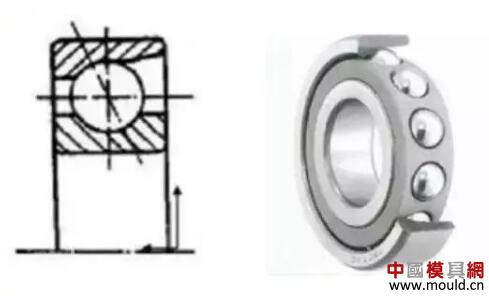
The main purpose:
Single row: machine tool spindle, high frequency motor, gas turbine, centrifugal separator, small car front wheel, differential pinion shaft.
Double row: oil pump, Roots blower, air compressor, various types of transmission, fuel injection pump, printing machinery.
Two, self-aligning ball bearings
Double-row steel ball, the outer ring raceway is inner spherical type, so it can automatically adjust the axis misalignment caused by the deflection or misalignment of the shaft or shell. Cone-hole bearings can be easily installed on the shaft through the use of fasteners. Radial load.
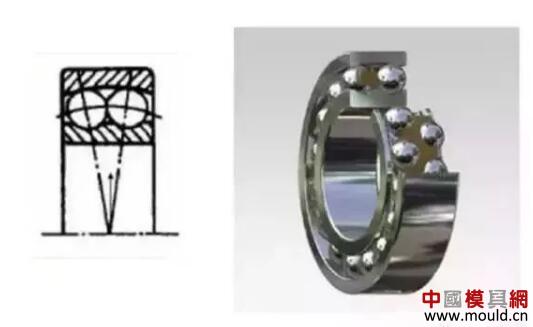
The main purpose: woodworking machinery, textile machinery transmission shaft, vertical seat with self-aligning bearings.
Three, self-aligning roller bearings
This type of bearing is equipped with a spherical roller between the outer ring of the spherical raceway and the inner ring of the double raceway. According to the different internal structure, it is divided into four types of R, RH, RHA and SR, due to the arc center of the raceway of the outer ring. The bearing center is the same and the centering performance is achieved. Therefore, the axial misalignment caused by the deflection or misalignment of the shaft or the housing can be automatically adjusted, and the radial load and the bidirectional axial load can be supported.

Main applications: papermaking machinery, deceleration devices, axles of railway vehicles, gear box seats of rolling mills, roller tracks of rolling mills, crushers, vibrating screens, printing machines, woodworking machinery, various types of industrial speed reducers, vertical type self-aligning bearings with seats .
Fourth, thrust spherical roller bearings
In this type of bearing, the spherical rollers are arranged in an inclined manner. Since the raceway surface of the raceway is spherical and has centering performance, the shaft can be allowed to have a number of inclinations, the axial load capacity is very large, and it can withstand a number of loads while bearing the axial load. Radial load, generally used in oil lubrication.
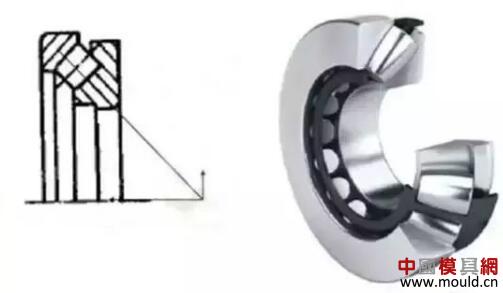
Main applications: hydroelectric generators, vertical motors, propeller shafts for ships, reducers for rolling mill rolling screws, tower cranes, coal mills, extruders, and forming machines.
Five, tapered roller bearings
This type of bearing is equipped with a round table-shaped roller. The roller is guided by a large rib on the inner ring. It is designed so that the apexes of the conical surfaces of the inner ring raceway surface, outer ring raceway surface and roller rolling surface intersect at the bearing center line. On the point. Single row bearings can support radial load and one-way axial load. Double row bearings can withstand radial load and two-way axial load. They are suitable for carrying heavy loads and shock loads.
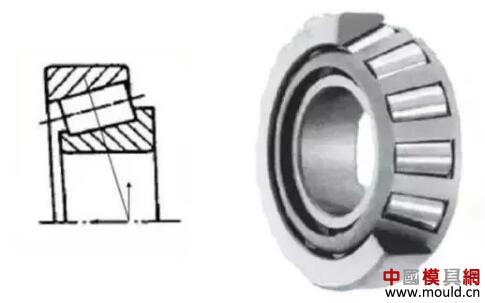
Main uses: Automotive: Front, rear, transmission, differential pinion shafts. Spindles for machine tools, construction machinery, large-scale agricultural machinery, gear reduction devices for railway vehicles, roll necks and deceleration devices for rolling mills.
Six, deep groove ball bearings
Each ring of the deep groove ball bearing in the structure has a continuous groove type raceway having a cross-section approximately one third of the equatorial circumference of the ball. Deep groove ball bearings are mainly used to withstand radial loads and can also withstand certain axial loads.
When the radial clearance of the bearing increases, it has the properties of angular contact ball bearings and can withstand alternating axial loads in both directions. Compared with other types of bearings with the same size, this type of bearing has a small coefficient of friction, high limit rotation speed and high precision, and is the preferred type of bearing for user selection.

Main uses: automobiles, tractors, machine tools, motors, pumps, agricultural machinery, textile machinery, etc.
Seventh, thrust ball bearings
It consists of a washer-shaped raceway ring with a raceway and a ball and cage assembly. The raceway ring that matches the shaft is called a shaft ring, and the raceway ring that matches the housing is called a seat ring. The two-way bearing is matched with the inner circle secret shaft, the one-way bearing can bear one-way axial load, and the two-way bearing can bear two-way axial load (both can not bear radial load).
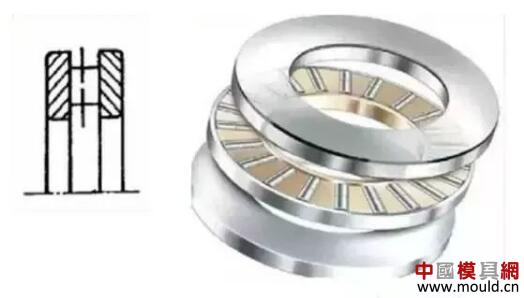
The main purpose: car steering pin, machine tool spindle.
Eight, thrust roller bearings
Thrust roller bearings are used to withstand the axial load of the main shaft, the combined radial load, but the radial load shall not exceed 55% of the axial load. Compared with other thrust roller bearings, this type of bearing has a lower friction coefficient, a higher rotational speed, and a self-aligning ability. The rollers of the 29000 bearing are asymmetrical spherical rollers, which can reduce the relative sliding of the stick and the raceway during operation. The roller has a long and large diameter. The number of rollers and the load capacity are large. Usually, the oil lubrication is used. Low speed grease lubrication.
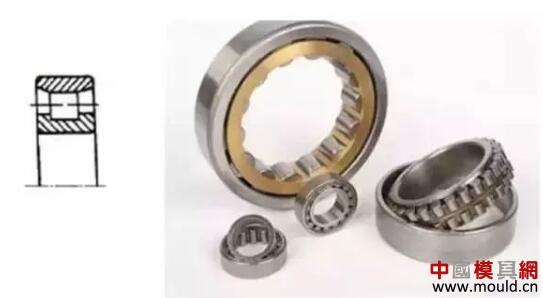
The main purpose: hydraulic generators, crane hooks.
Nine, cylindrical roller bearings
The rollers of a cylindrical roller bearing are usually guided by the two ribs of a bearing ring. The cage roller and the guide ring form an assembly that can be separated from the other bearing ring and is a detachable bearing.
The installation and disassembly of this type of bearing is more convenient, especially when it is required that the inner and outer rings and the shaft and the shell are both in interference fit. This kind of bearing is generally only used to bear radial load. Only the single row bearing with ribs on the inner and outer rings can bear smaller constant axial load or larger intermittent axial load.
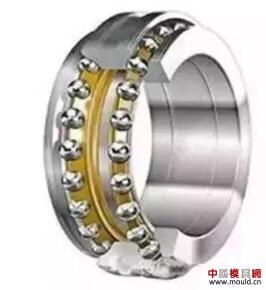
Main applications: Large motors, machine tool spindles, axle shaft boxes, diesel crankshafts, automobiles, and invariable boxes.
Ten or four point contact ball bearings
Can withstand radial load and two-way axial load, a single bearing can replace the positive combination or the combination of the back of the angular contact ball bearings, is suitable for bearing pure axial load or axial load component of the composite load, this type of bearing withstand any direction One of the contact angles can be formed when the axial load is applied, so that the ferrule contacts the ball at both contact points on either contact line.
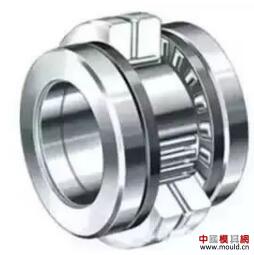
Main uses: jet aircraft engines, gas turbines.
Eleventh, thrust cylindrical roller bearings
It consists of a washer-shaped bearing ring (shaft ring, seat ring) and a cylindrical roller and cage assembly. The cylindrical roller adopts convex surface processing, so the pressure distribution between the roller and the raceway surface is even, and it can withstand one-way axial load, large axial load capacity, and strong axial rigidity.
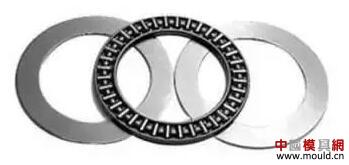
Main uses: oil drilling rigs, iron making steel machinery.
Twelve, thrust needle roller bearings
The separation type bearing consists of a raceway ring, a needle roller and a retainer assembly, and can be combined with a thin press-rolled raceway or a thick-cut raceway. The non-separable bearing is a one-piece bearing composed of a precision-stamped raceway ring and a needle roller and cage assembly. It can withstand one-way axial load. This type of bearing has a small space and is conducive to the compact design of machinery. Only the needle roller and cage assembly is used, and the mounting surface of the shaft and housing is used as a raceway surface.
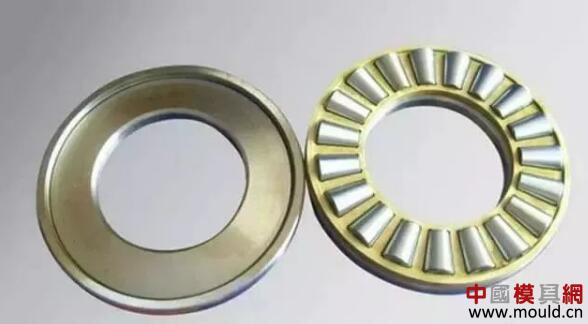
Main applications: Transmissions for automobiles, cultivators, machine tools, etc.
XIII. Thrust tapered roller bearings
This type of bearing is equipped with a round table-shaped roller (big end is a spherical surface). The roller is accurately guided by the ribs of the raceway ring (shaft ring, seat ring). The design makes the shaft ring and the raceway raceway and the roller raceway. The vertices of each cone face intersect at a point on the centerline of the bearing. One-way bearings can withstand one-way axial loads, and two-way bearings can withstand two-way axial loads.
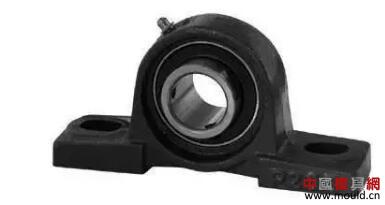
The main purpose:
One-way: crane hook, oil drilling rig swivel.
Bidirectional: Roller neck.
Fourteen, with spherical ball bearings
Spherical spherical ball bearings are composed of double-faced sealed spherical ball bearings and cast (or steel stamped) bearing blocks. The internal structure of the spherical ball bearing is the same as that of a deep groove ball bearing. However, the inner ring of this type of bearing is wider than the outer ring. The outer ring has a spherical outer surface that matches the concave spherical surface of the bearing seat and can be self-aligning.
Main uses: mining, metallurgy, agriculture, chemical industry, textile, printing and dyeing, transportation machinery, etc.
HAE wall printer height can customize between 2M to 3M, standard machine width is 3M, customer could order extra lead rail or do photo joint, so the printing width is limitless, and printing resolution up to 1440dpi
We developed new direct to wall inkjet printer with it own PC, and operated on tablet, the mural printing machine any print any format photo in any size on canvas, wood, wall, wall paper, tile, glass etc. directly

Direct To Wall Inkjet Printer, Zeescape Wall Printer,Inkjet Printer On Wall, Vertical Wall Decor Printer,Wall Paper Printer, Wall Inkjet Printer, 3D Wall Printer, Wall Printer Machine, Vertical Wall Printer
Wuhan HAE Technology Co., Ltd. , https://www.whuvwallprinter.com